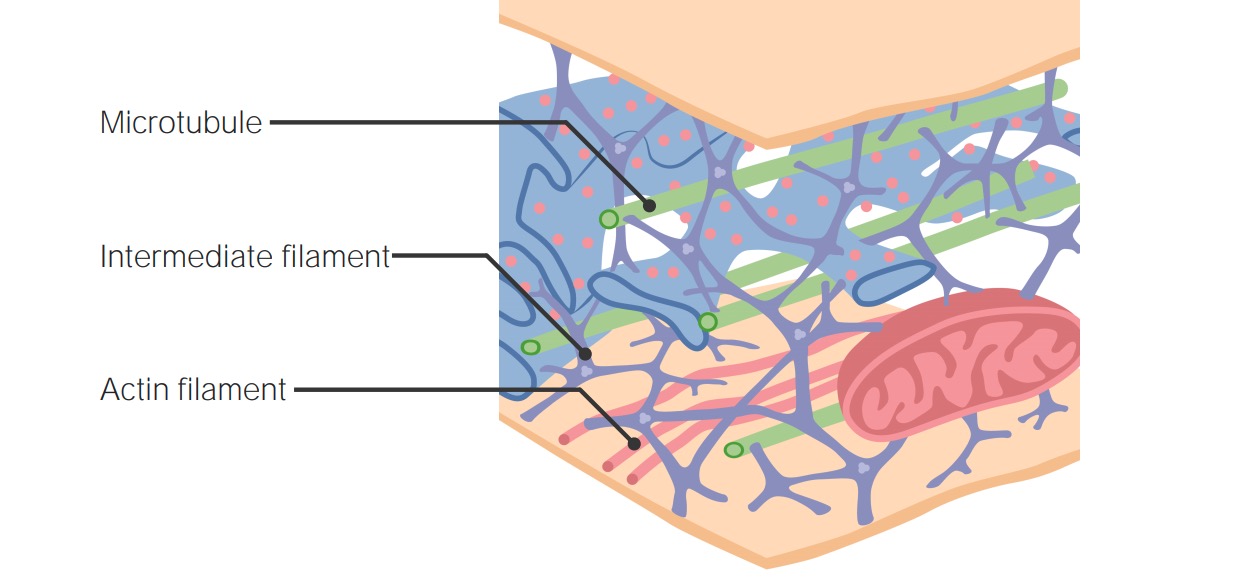Playlist
Show Playlist
Hide Playlist
Extracellular Structures and Cell Movement
-
Slides 07 Membranes CellBiology.pdf
-
Reference List Molecular and Cell Biology.pdf
-
Download Lecture Overview
00:00 So that brings us into actually looking at how cells could move. 00:05 We talked about this ameboid type movement that we might see with a macrophage This is our example of a macrophage. 00:12 And it can crawl into tissues and destroy pathogens or pick up trash, clean up generally around all of the tissues. 00:20 And then other cells move around by other means. These things are all connected to the extracellular matrix. 00:27 So we have both cilia and flagella. Now, in humans, we only see sperm using flagella. 00:37 They wave their tails to add propulsion and swim up through the reproductive tract. 00:44 But we also see a lot of instances where there are much smaller motility fetures on the outside of the cell that we call cilia. 00:54 Cilia are small hairlike structures, for example in the lungs, the way that we're able to transport mucus out of the lungs. 01:03 It's these hairs are constantly moving in order to kind of sweep things in an upward motion against gravity. 01:11 Someone who smoke all of their life has burnt those hair and hence you get that smoker's cough because they have to cough so hard, the cilia are no longer working to push mucus up and out. 01:23 So they're really relying on the velocity provided by cough. 01:27 In other example of cilia in the human reproductive tract, in the female reproductive tract, cilia are in groups in the Fallopian tubes and on the ridges and they will actually sweep sperm up towards the egg as well as push the egg down towards the sperm. So lots of instances where we see cells taking these features for motility inside the human system. Only one example really of flagella. 01:58 But either way, they are a different arrangement than we see in prokaryotic flagella which they also use for motility but it's an example of where we see microtubules I guess that's the point. 02:11 So we have this 9 + 2 arrangement of microtubules where we have pairs of microtubules around the outside and a couple of microtubules in the inside and this will actually function to rotate instead of a waving motion in order to move materials pass the cell of their cilia or swim of the tail if they are sperm in our system.
About the Lecture
The lecture Extracellular Structures and Cell Movement by Georgina Cornwall, PhD is from the course Cellular Structure.
Included Quiz Questions
Which of the following are associated correctly? Select all that apply.
- Ameboid locomotion — macrophages
- Bronchial cilia — move mucus and debris out of the lungs
- Human sperm — 9+2 arrangement of microtubules in the flagellum
- Cilia — fine, hair-like cellular appendages
- Ovum flagella — help in capturing sperms during fertilization
Which of the following is NOT correctly related to cilia in the human body?
- Gastrointestinal cilia — help in the movement of white blood cells from the spleen to the site of infection
- Renal cilia — detection of urine flow in kidneys
- Tracheal cilia — protection of lungs from dust and foreign particles
- Fallopian tube cilia — aid in the movement of the ovum to the uterus
- Photoreceptor sensory cilia — photoreception in the human eye
Customer reviews
5,0 of 5 stars
| 5 Stars |
|
5 |
| 4 Stars |
|
0 |
| 3 Stars |
|
0 |
| 2 Stars |
|
0 |
| 1 Star |
|
0 |





